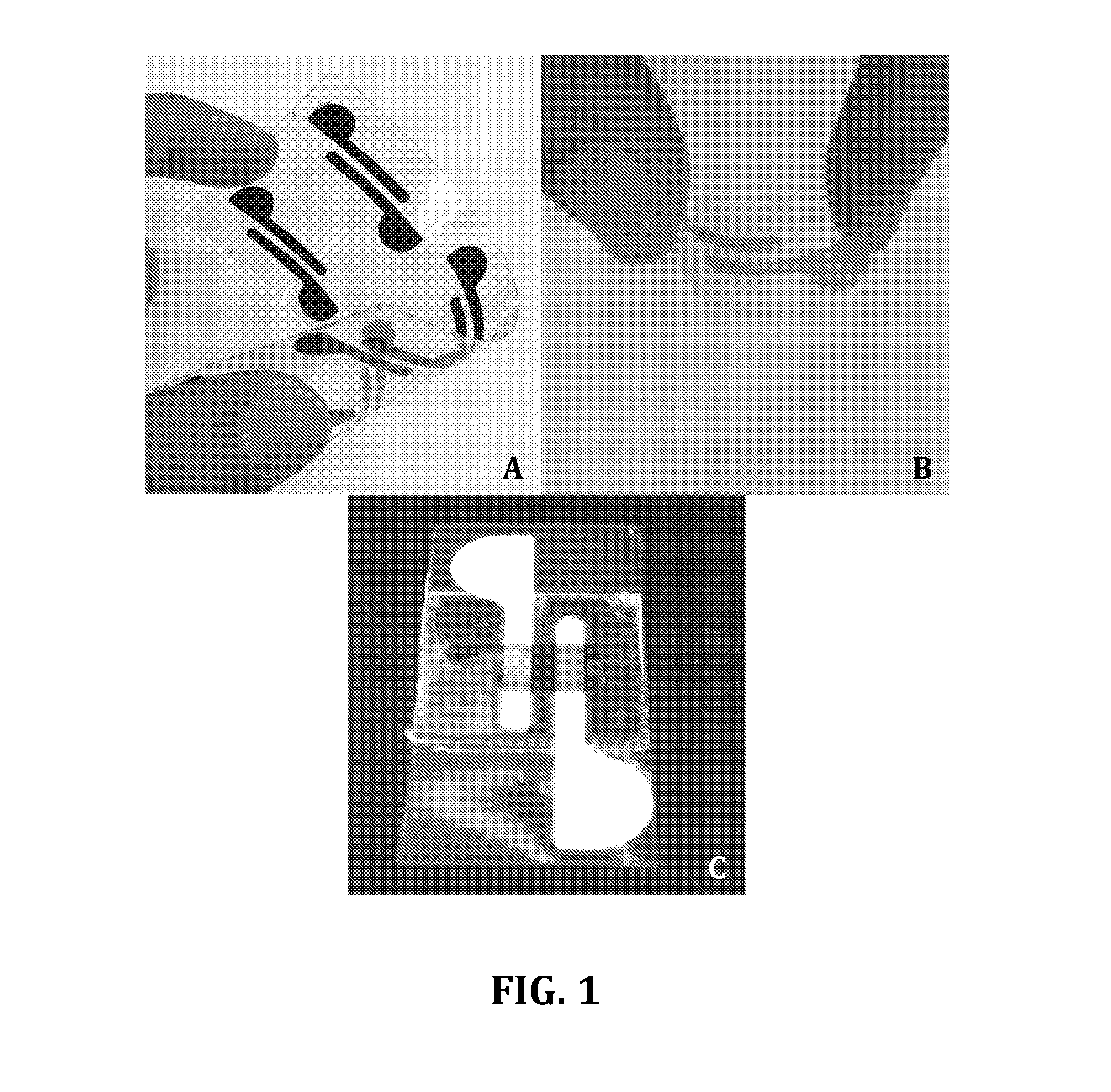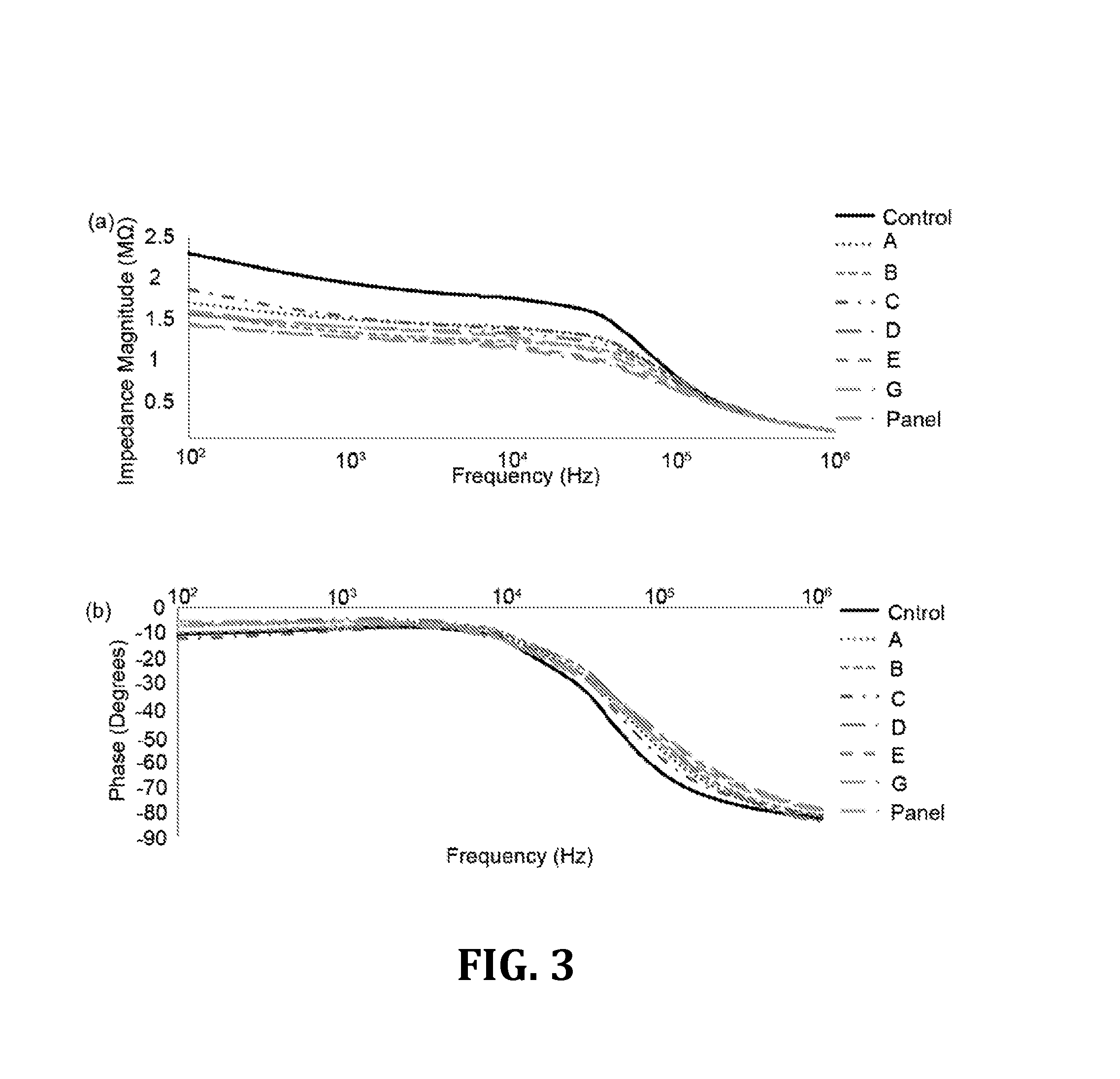System and Method for Detecting Pathogens
a pathogen detection and pathogen technology, applied in the field of pathogen detection systems and methods, can solve the problems of reducing the efficacy of second-line art regimens, shortening the clinical durability of available art in developing countries, and false positive diagnosis, etc., to achieve the effects of convenient use, low cost, and convenient manufacturing
- Summary
- Abstract
- Description
- Claims
- Application Information
AI Technical Summary
Benefits of technology
Problems solved by technology
Method used
Image
Examples
example i
[0042]For the following example, the following reagents were obtained and used. Triton X-100 (100%), glycerol (100%), and Bovin Serum Albumin (BSA, 10%) were purchased from Sigma-Aldrich® (St Louis, Mo.). Dulbecco's Phosphate Buffered Saline (DPBS, 1×) was bought from Life Technologies' (Grand Island, N.Y.). HyPure™ Molecular Biology Grade Water was obtained from Fisher Scientific (Agawam, Mass.). Ethanol (200 proof) was bought from Sigma Aldrich® (Sheboygan, Wis.). Biotinylated polyclonal goat anti-gp120 antibody (4 g / mL) was obtained from Abcam® (Cambridge, Mass.).
[0043]Magnetic beads conjugated with anti-gp120 antibodies were prepared. Streptavidin-coated magnetic beads (1 μm diameter) were purchased from Thermo Scientific (Rockford, Ill.). After diluting in DPBS by 1:10 (v / v), the beads were washed three times with DPBS (1.5 mL) using a BioMag® multistep magnetic separator from Polyscience Inc. (Warrington, Pa.). Antibody conjugation was done by adding biotinylated anti-gp120 an...
example ii
[0046]Microchips were fabricated in the following manner. Two rail electrodes were patterned on hydrophobic transparency papers using silver ink from Engineered Materials Systems, Inc. (Delaware, Ohio). The electrodes geometry and design were cut on a double-sided-adhesive film (DSA) using a VLS2.3 laser cutter from Universal Laser Systems Inc. (Scottsdale, Ariz.). This DSA used as a mask and taped on top of a paper and conductive ink (graphite or silver) was poured on top of the mask to fill the openings on the DSA. A glass cover slip was used to distribute the ink evenly everywhere in the openings. The paper with the inks were then baked in an oven at 80° C. for one hour. After the ink dried, the protective DSA was removed and the electrodes patterned in the openings of the mask were left on the paper. The thickness of the electrodes was approximately 50 μm. The width and spacing of these two rail electrodes were 2 mm and 1 mm, respectively.
[0047]FIG. 10 shows Scanning Electron Mi...
example iii
[0048]For the results that follow, Tukey's post-hoc test [Analysis of Variance (ANOVA)] was used to analyze the experimental results for multiple comparisons and the statistical significance threshold was set at 0.05 (n=3, p<0.05), unless otherwise indicated. Statistical analyses were performed with Minitab software (V14, Minitab Inc., State College, Pa., USA).
PUM
| Property | Measurement | Unit |
|---|---|---|
| frequencies | aaaaa | aaaaa |
| frequencies | aaaaa | aaaaa |
| frequencies | aaaaa | aaaaa |
Abstract
Description
Claims
Application Information
 Login to View More
Login to View More - R&D
- Intellectual Property
- Life Sciences
- Materials
- Tech Scout
- Unparalleled Data Quality
- Higher Quality Content
- 60% Fewer Hallucinations
Browse by: Latest US Patents, China's latest patents, Technical Efficacy Thesaurus, Application Domain, Technology Topic, Popular Technical Reports.
© 2025 PatSnap. All rights reserved.Legal|Privacy policy|Modern Slavery Act Transparency Statement|Sitemap|About US| Contact US: help@patsnap.com



